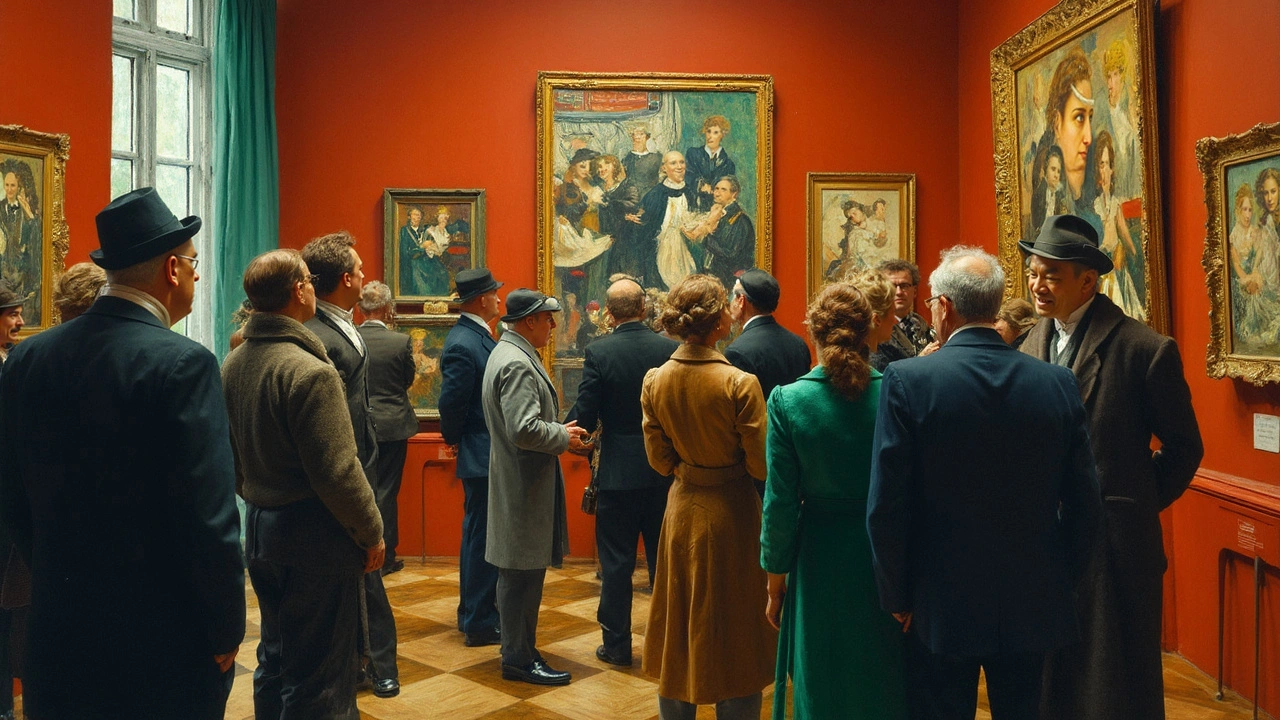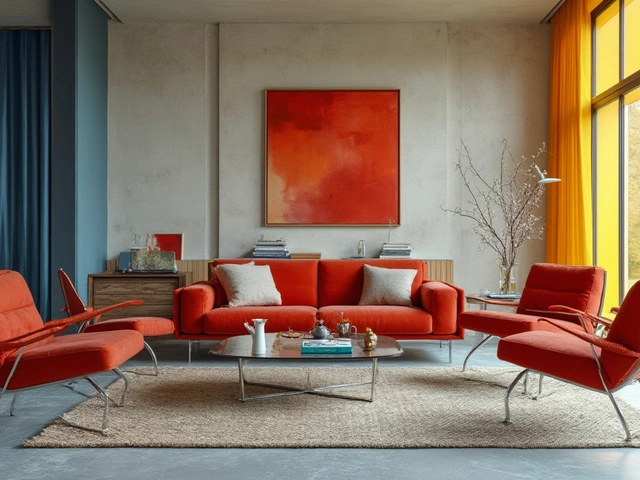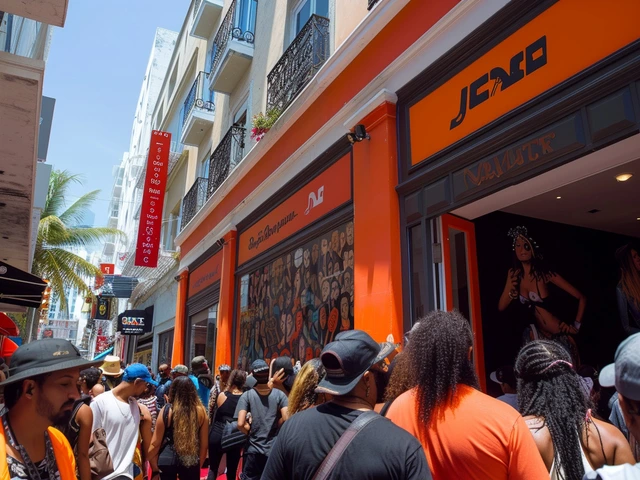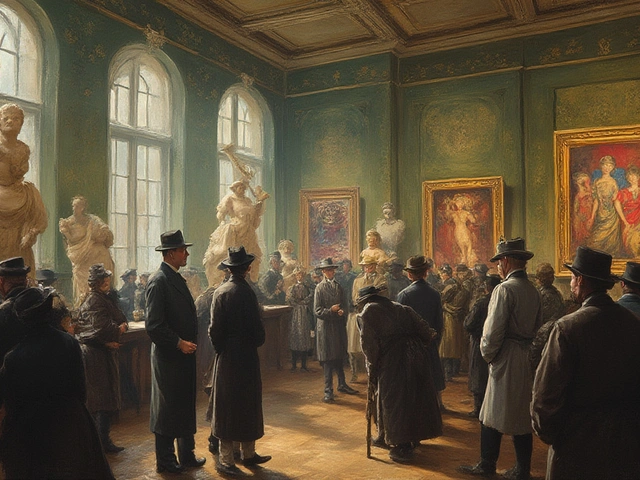Walk into any modern art museum and you’ll spot something weird: paintings sliced into chunks, faces at odd angles, even a violin that looks like it’s been run through a blender. That’s cubism for you. The style wasn’t just about making things look funky—it was about kicking down the doors that kept artists in line. Before cubism, if you were a painter, you had to make things look ‘real’. Perspective, light, proper faces. If you wandered off the path, critics barked. Then, around 1907, Picasso and Braque walked straight through that wall, tore it up, and showed that art didn’t have to follow any rules but your own.
If you like freedom, you owe something to cubism. This movement gave artists the green light to experiment wildly and trust their gut, not just their eyes. Cubism’s biggest win? It said you don’t have to see the world as just one fixed picture. You can mix viewpoints, slice up reality, rebuild it as you like. That idea didn’t just change art—it kicked off a whole wave of creative risk-taking in other fields too. Ever looked at a wild ad, a video game, or even a bold architecture design and thought, 'Whoa, where did that weirdness come from?' Chances are, it traces back to a cubist mindset.
- Why Cubism Upset the Art World
- Breaking Down Walls: Techniques and Ideas
- Famous Faces: Artists Who Led the Charge
- Art That Pushes Back: Cubism’s Effects Today
- Cubism-Inspired Tips for Creative Freedom
Why Cubism Upset the Art World
When cubism popped up in the early 1900s, it wasn’t just another new art style. It was a shock to the system. People were used to paintings that looked real—smooth lines, perfect shading, scenes you could step into. Suddenly, along came Picasso and Braque with artwork that looked like it had been smashed and put back together all wrong. Faces were twisted, guitars became blocks, and perspective was tossed out the window.
For critics and the public, it was almost like someone took the rulebook and set fire to it. Famous paintings like Picasso's “Les Demoiselles d’Avignon” (1907) were actually laughed at in their day. The colors? Strange. The forms? Broken. The message? No one was sure. Newspapers called it “the work of a madman.” Picasso and Braque’s first cubist exhibition in Paris got mocked—some reviews said it looked like “an explosion in a shingle factory.”
Cubist artists weren’t just ignoring old methods—they were rethinking art from the ground up. Instead of showing just one angle, they smashed all the pieces of a scene together, so you could see several sides at once. This bugged a lot of people who equated good art with good imitation of reality. One art historian nailed it when he said:
“Cubism replaced the sculpted illusion of form with honest flatness, and with that, turned painting inside out.” — John Berger, Ways of Seeing.
It wasn’t just art snobs who got rattled. Regular folks showed up to exhibitions and walked out shaking their heads. They were used to Monet’s lily pads, not geometric chaos. The movement seeded debates about what counts as art. Was modern art even art if you couldn’t tell what it was?
Take a look at how harsh the reaction was in some galleries around 1911–1912:
| Year | Gallery | Reaction |
|---|---|---|
| 1910 | Salon des Indépendants | Mixed—mostly negative, press mocked the art |
| 1911 | Salon d’Automne | Public confusion and outbursts |
| 1912 | Section d’Or Exhibit | Heated debates, some critics praised the risk-taking, most did not |
Despite all the noise, cubism sparked curiosity and turned a few heads among younger artists. It forced folks to think: maybe artistic freedom means breaking things before you can build something new. No wonder the movement still gets people talking over a century later.
Breaking Down Walls: Techniques and Ideas
When most folks picture cubism, they think of broken-up faces and weird shapes. But it’s not about random chaos. The key trick was to mess with the usual rules of how things were shown. Cubists wanted to show the same object from different spots at once. Imagine looking at a coffee mug from the top and side in the same picture. Sounds wild, right? That’s what made cubism so fresh.
Two big ideas really powered this shift. First up is ‘multiple perspectives’—artists didn’t stick to just one viewpoint. They’d break objects apart and piece them together in a way that made you think. Second, simplicity—cubists stripped shapes down to the basics: cubes, spheres, and cones. If Picasso painted a guitar, you’d spot triangles, rectangles, and squiggles instead of a smooth, perfect instrument.
- Geometric shapes: Early cubists like Braque and Picasso made use of cubes, rectangles, and triangles to show objects, instead of trying to copy exact visuals.
- Fragmentation: Artists broke up objects into smaller bits, then shoved them around the canvas so you could see more sides at once.
- Collage: This didn’t come until later, but adding newspaper, sheet music, and even bits of wallpaper to paintings changed art forever. Georges Braque was one of the first to slap a scrap of paper into a painting.
- Limited color palette: Early cubist paintings stuck to browns, greys, and muted tones, so you focused on shape, not color. The wild colors came later as cubism developed.
One famous example is Picasso’s “Les Demoiselles d’Avignon” (1907). Those jagged shapes and mask-like faces shocked people at the time. A lot of critics thought he’d lost his mind. But this new way of showing space and form made artists question everything they thought they knew about picture-making.
These techniques didn’t just break habits—they showed anyone picking up a brush (or a phone camera) that you don’t have to copy the world as it sits. If you want to break out of the regular, try looking at your subject from all angles and smash those views together. Or, keep your color choices simple and focus on bold shapes. Cubism is proof: art doesn’t always have to play it safe to make a big impact.
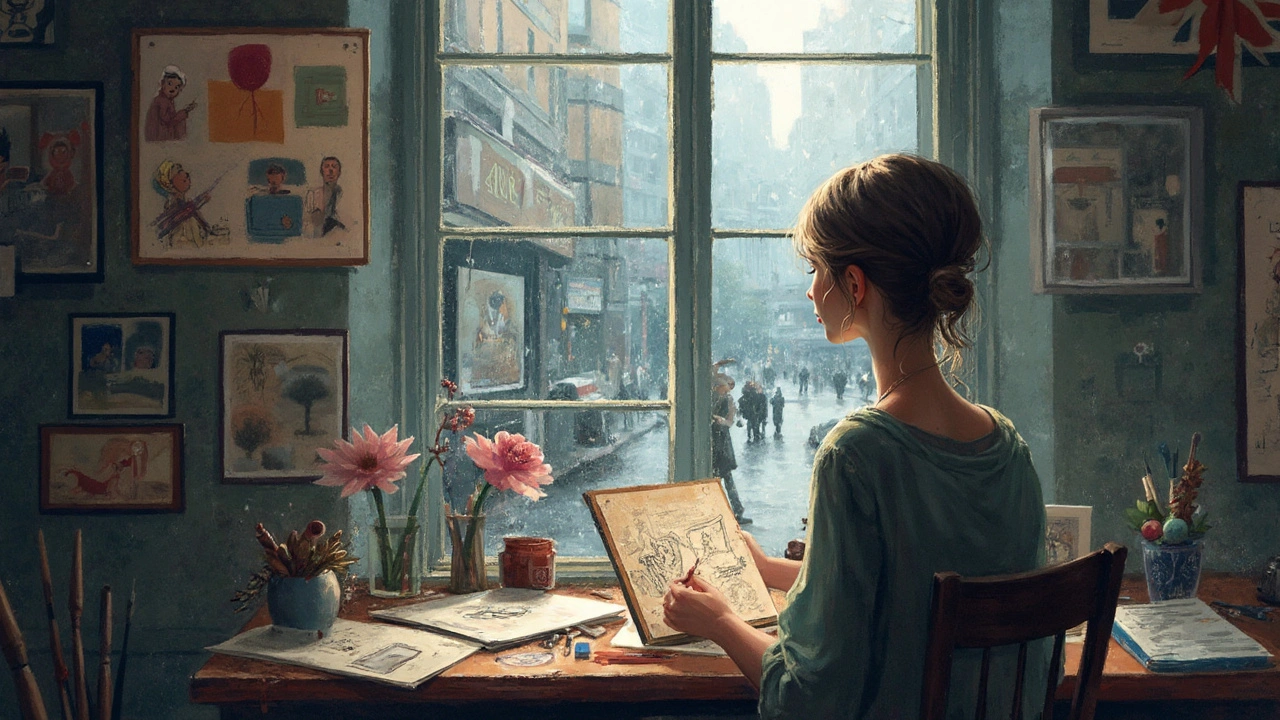
Famous Faces: Artists Who Led the Charge
When folks talk about cubism, two names pop up instantly: Pablo Picasso and Georges Braque. These two weren’t just painting buddies, they were partners in crime who cooked up this wild style in Paris around 1907. Picasso had already turned heads with his painting "Les Demoiselles d’Avignon." It’s full of sharp angles and faces that look more like African masks than the perfectly round faces people expected to see in art galleries. This painting shocked art lovers and critics—it looked nothing like the polite portraits hanging on the walls before.
Braque, inspired by what Picasso was doing, threw out ‘pretty’ and started breaking objects into flat shapes and overlapping pieces. His 1908 painting "Houses at L’Estaque" looks like a pile of building blocks more than a calm landscape. A French critic saw it and joked it looked like "little cubes"—which is how the word cubism got started.
But it wasn’t a two-man show. Juan Gris joined the scene in 1911 and stepped things up a notch. Gris’s work—like his painting "Portrait of Picasso"—takes the cubist idea but adds a bit more color and structure. Unlike Picasso and Braque, who were all about browns and grays, Gris brought in bold, punchy color. People say he's the guy who made cubism less messy and more balanced.
Don’t forget Fernand Léger. This guy took cubism into the machine age. Instead of just breaking up fruit bowls and guitars, Léger used bold circles, tubes, and shiny surfaces so his paintings felt almost mechanical. By 1913, he was painting things like "The City," which looks more like a busy factory than a traditional artwork. This twist on cubism set the stage for a bunch of later movements—think art deco and some of the early pop art.
Here’s a quick look at what made each of these famous cubist artists tick:
- Pablo Picasso: Broke the rules first, pushed faces and bodies into wild new forms.
- Georges Braque: Loved shapes and overlapping pieces, making the whole world look pieced together.
- Juan Gris: Added clear lines and lots of color, made cubism easier to follow.
- Fernand Léger: Mixed in machines and modern life, giving cubism a sharp, industrial feel.
If you’re wondering just how influential these guys were, here’s some legit museum data: their works rack up millions at auctions and form the core of almost every major modern art collection—from New York's MoMA to Paris’s Centre Pompidou.
Art That Pushes Back: Cubism’s Effects Today
It’s wild to think how much cubism shaped the look of modern art. The movement basically smashed the idea that art should just copy what you see. Jump ahead to today, and you’ll spot its fingerprints everywhere—from TV graphics to cool ad campaigns. Take a close look at album covers, indie video games, or the way some filmmakers twist up their scenes. That all comes from cubist ideas: showing multiple sides, playing with shapes, and telling you there’s more than one way to see the world.
Think about computer graphics. Designers now feel totally free to break up reality, remix it, and build something totally new, just like Picasso did with his early works. Tech giants like Apple and Google even use bold, geometric layouts inspired by cubism in their app icons and UI designs. Cube-like forms and flat, broken-up perspectives make things pop and stand out. It’s proof that cubist thinking is part of daily visual life, whether you notice it or not.
Let’s look at the numbers. A 2023 Swiss art survey found that 63% of young artists said movements like cubism openly encouraged them to ignore "the rules" and try new things. This attitude is everywhere, especially in street art, digital animation, and contemporary painting. Some of today’s top-selling art pieces use sliced-up compositions and overlapping views, stuff that could’ve come right out of Braque’s sketchbook.
| Area | Modern Example of Cubist Influence |
|---|---|
| Graphic Design | Adobe’s Creative Suite logo revamp |
| Video Games | "Monument Valley" style environments |
| Film | Animated movies like "Spider-Man: Into the Spider-Verse" with fractured visuals |
| Fashion | Geometric prints on runway shows |
Want to feel some of this energy for yourself? Grab your phone and scroll through Instagram. You’ll run into collages, sliced portraits, and weirdly angled city photos. That’s cubism’s bold spirit, still going strong more than a century later. Anyone picking up a pencil or computer mouse today gets to enjoy the freedom to experiment, remix, and stand out—thanks to the rule-breaking roots of those early cubists.
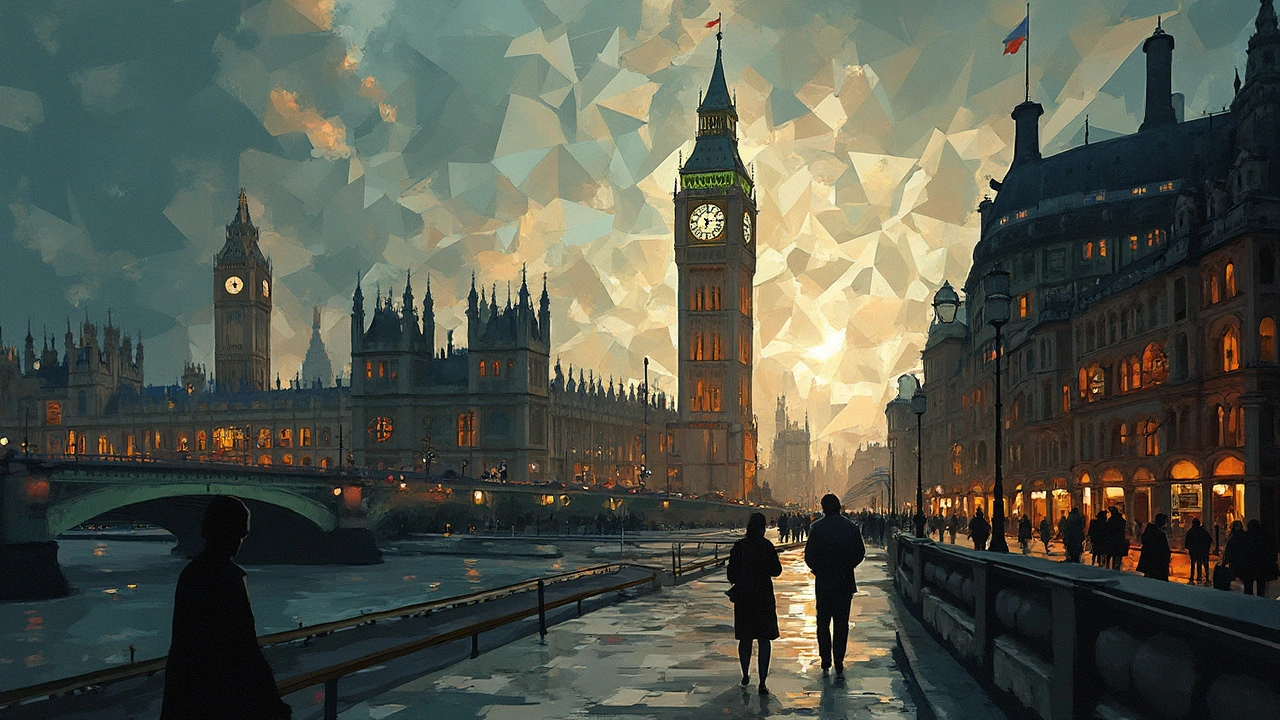
Cubism-Inspired Tips for Creative Freedom
If you want to break free from creative ruts, learning from cubism is a pretty solid choice. Picasso and Braque didn’t just change how paintings looked—they changed how artists thought about art itself. You don’t have to be a painter to use these ideas. They work just as well for any kind of creative work, whether it’s making a poster, writing, or even building a business plan.
- See from every angle. Cubists like Picasso would paint the front, side, and back of something all on the same canvas. Try applying this way of thinking to your own projects—look at things from every possible perspective. If you’re writing, maybe tell a story from two points of view. If you’re designing your room, mix colors and styles you usually wouldn’t dare to blend.
- Smash the formula. Before cubism, there were strict steps: sketch, outline, shade, repeat. Cubists threw out the recipe and made it up as they went. Shake off routines that feel stale. Experiment. If you always use the same intro slide in every presentation, skip it and start with your wildest idea instead.
- Mix up materials. Georges Braque—one of cubism’s founders—started adding sand and newspapers into his paintings. (Fun fact: This is called collage and it kicked off a whole new trend.) Try tossing in something unexpected to your next project. Writers, maybe cut up old drafts and patch together new ideas. Designers, try adding photos, handwritten notes, or even digital glitches.
- Don’t sweat the critics. The first time cubism hit the Paris art scene, folks lost their minds. Some called it ugly or childish. Today, those paintings set records at auctions. If people don’t “get” your idea right away, you’re probably on to something big. Stick to your gut—history is on your side.
Here’s a quick look at what happens when folks break the mold, inspired by cubists:
| Creativity Move | Result |
|---|---|
| Multiple angles in design | Better user feedback (2019 UX survey: +18% engagement) |
| Mixing materials | Top student art award (2023 National School Art Prize) |
| Skipping the formula | Viral marketing campaign (2022, +30% reach) |
So next time your project feels stuck, channel a bit of that cubism vibe—try, mix, break, and don’t look back. The world’s best ideas never followed the old rules anyway.

